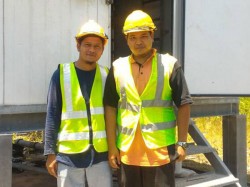Generation Agnostic Base Stations (GABS)
Our Generation Agnostic Base Stations (GABS) are built on a high-performance platform, featuring an optimized hardware and software architecture that offers the following advantages:
- Multi-Network Compatibility: With a modular design, these base stations support multiple network modes and provide broad bandwidth, allowing seamless network transitions.
- Flexible Evolution: GABS allows smooth upgrades from GSM to UMTS and then to LTE, adapting to future network demands with ease.
- Versatile Configurations: Huawei’s universal base station design enables flexible configuration by combining core modules and various cabinets. Key modules include the Baseband Unit (BBU) and the Radio Frequency Module, which consists of the Radio Frequency Unit (RFU), Remote Radio Unit (RRU), and Active Antenna System (AAS).
This advanced, adaptable design ensures reliable connectivity and scalability across diverse telecommunication environments.
With over 1,000 successful site completions for clients like Maxis, CelcomDigi, UMobile, Huawei, and Edotco, we are recognized as an industry leader with exceptional expertise across various CME projects, including:
- CME Rooftop Installations: Mini Poles, Minimasts, Bipods, Tripods, and Unipoles
- CME Vacant Land Sites: Foundations, towers, lamp poles, monopoles, billboards, and Portable Base Transceiver Stations (PBTS)
- CME Room Renovations
- CME Shared Towers
- Structure Dismantling, Relocation, and Installation
- Antenna and Outdoor Coverage System Installation
- BTS Installation, Commissioning, & Integration
- Rectifier Installation, Testing, and Commissioning
- RBS/BTS System Installation for Migration and Upgrades
- 4G LTE System Installation
Our comprehensive expertise covers all aspects of telecommunication infrastructure, ensuring each project meets the highest standards and client requirements across the region.
A Base Transceiver Station (BTS) is essential equipment for wireless communication, creating a link between user devices—such as mobile phones, wireless local loop (WLL) phones, and computers with wireless Internet access—and a network. This network can utilize various wireless communication technologies, including GSM, CDMA, Wi-Fi, WiMAX, and other wide area networks (WAN). The BTS, sometimes referred to as a Radio Base Station (RBS), Node B (in 3G networks), or simply a Base Station (BS), is critical for reliable connectivity in both urban and remote areas.
Specialists in BTS installation and play a vital role in deploying and configuring these systems to provide optimal network coverage. This includes site selection, equipment assembly, and integration with network infrastructure to meet specific coverage requirements. Whether for urban expansion or remote location deployment, skilled teams ensure each BTS is effectively aligned with user demands, network standards, and local regulations to maximize service quality and network performance.
Microwave links have been widely used in wireless telecommunications for decades due to their reliability and efficiency in long-distance, point-to-point communication. Their short wavelength enables the use of compact antennas that can direct signals in narrow, precise beams, allowing for efficient and direct transmission to the receiving antenna. The high frequency of microwaves also provides a large information-carrying capacity, with a bandwidth that is 30 times greater than the combined radio spectrum below it.
Experienced technical teams offer a range of services for microwave link projects, including Line of Sight (LOS) surveys, frequency scanning, installation, troubleshooting, and ongoing preventive and corrective maintenance. These services ensure optimal link performance, reliability, and alignment with network requirements.















